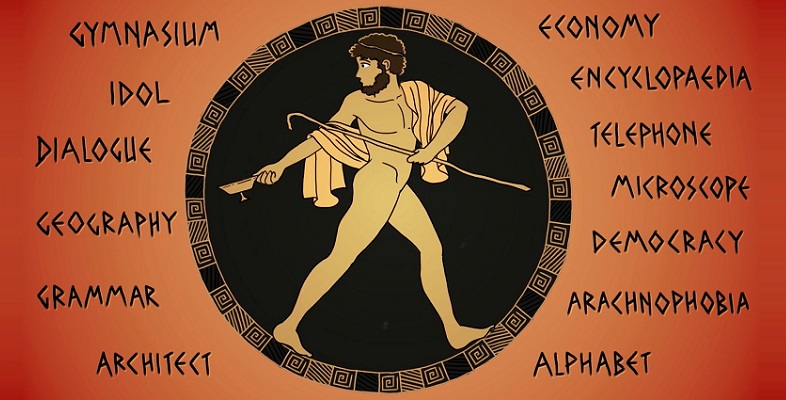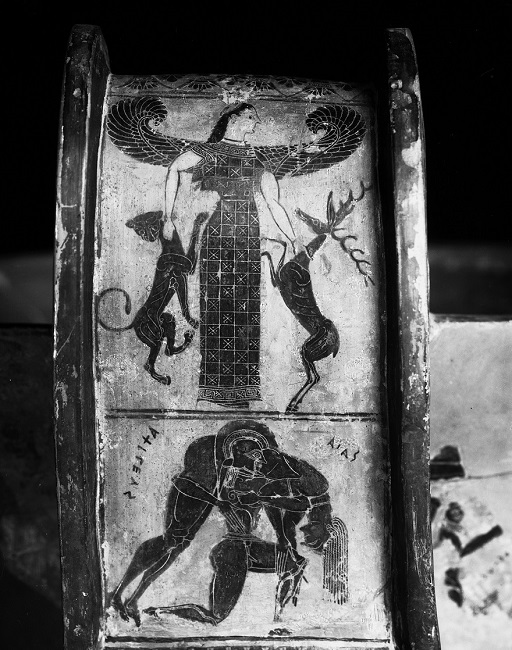7.1 A Greek vase
Let’s now look at some examples of writing from a piece of painted pottery from the early to mid-sixth century BCE. Words painted onto pots like this are known by the Italian word ‘dipinti’, i.e. ‘painted things’ (compare the word ‘graffiti’, which is the Italian for ‘written things’).
Activity 7 A Greek vase handle
Look at this detail from the handle of a Greek vase. The names of one of the two figures has been written ‘backwards’. Can you identify which one? Which letters help you to decide?
Discussion
The name on the left is written ‘backwards’, although we must remember that it is ‘backwards’ only from our perspective. It would not have been thought of as unusual in the sixth century BCE when the vase was manufactured. The direction of the writing is clearest from the ‘epsilon’, the fifth letter from the top, which is inverted as it would be in a mirror. The final sigmas of each name also face different directions. Other letters, such as the initial alphas, look similar in either direction.
Now, can you read either of the names? Familiarity with Greek mythology and events from the Trojan War would help.
(Tip: the fourth letter down on the left-hand name is a lambda, looking rather more like English ‘L’ than the Λ which eventually became standard.)
Discussion
The names read ΑΧΙΛΕΥΣ (Achileus = Achilles) and ΑΙΑΣ (Aias is the Greek name for the hero Ajax). In both cases, a reader would read the names from the centre outwards, from alpha to sigma. Ajax is carrying the body of Achilles from the battlefield at Troy, a scene depicted frequently on Greek vases and recounted in a lost epic poem attributed to Homer, called Aethiopis.
This detail is from a handle of the ‘François Vase’, named after the Italian archaeologist who discovered it in the nineteenth century. The vase stands more than two feet high and contains many other mythological scenes. Among its interesting features are the signatures of the potter, Ergotimos, and the painter, Kleitias.

